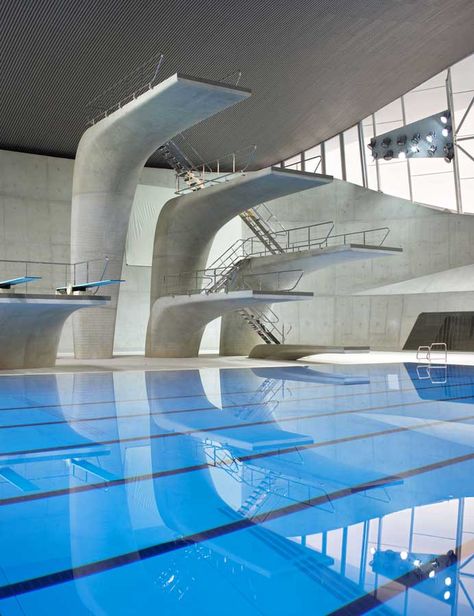Nice To Build State-of-the-Art Olympic Swimming Pool Facility

Table of Contents
Designing the Perfect Olympic-Sized Pool
Creating an Olympic-sized swimming pool requires adherence to precise specifications and the use of high-quality materials. Let's delve into the crucial design elements:
Pool Dimensions and Specifications
Olympic pools adhere to strict regulations set by the International Swimming Federation (FINA). These regulations ensure fairness and consistency in international competitions. The standard dimensions are 50 meters long and 25 meters wide, with a minimum depth of 2 meters.
- FINA Standards: Compliance with FINA standards is essential for hosting official competitions. This includes precise measurements, lane markings, and starting block specifications.
- Lane Rope Specifications: The lane ropes must meet FINA regulations regarding material, buoyancy, and spacing.
- Starting Block Requirements: Starting blocks must be of a specific height and design to ensure a fair start for all competitors.
- Lane Dividers: Properly installed and maintained lane dividers are crucial for maintaining lane integrity during races.
Adhering to FINA regulations is paramount, not only for hosting official competitions but also for maintaining the integrity and prestige of your facility.
Materials and Construction
The choice of materials for your Olympic swimming pool significantly impacts its longevity, maintenance requirements, and overall cost. Several options exist, each with its own advantages and disadvantages:
- Concrete: Concrete is a durable and versatile material, offering excellent longevity and structural integrity. However, it requires careful construction and regular maintenance.
- Stainless Steel: Stainless steel pools are known for their hygiene benefits, as they are non-porous and resistant to bacteria growth. They are also highly durable but come with a higher initial cost.
- Fiberglass: Fiberglass pools are a more cost-effective option, offering a quicker installation time. However, they may not be as durable as concrete or stainless steel and require careful handling to avoid damage.
The best material choice depends on your budget, long-term maintenance plans, and desired aesthetic.
Water Treatment and Filtration
Maintaining impeccable water quality is paramount for both athlete health and the longevity of the pool itself. Advanced water treatment and filtration systems are essential:
- UV Disinfection: UV disinfection effectively eliminates harmful bacteria and viruses without the need for excessive chemicals.
- Ozone Treatment: Ozone is a powerful disinfectant that enhances water clarity and reduces the need for chlorine.
- Sand Filtration: Sand filters effectively remove debris and particulate matter from the water, ensuring its clarity.
- Chemical Balance Control: Regular monitoring and precise control of chemical levels (pH, alkalinity, chlorine/bromine) are crucial for maintaining safe and healthy water.
These systems work together to provide clean, healthy, and safe water for swimmers, minimizing the risk of infections and prolonging the life of the pool.
Creating a World-Class Aquatic Center
Beyond the pool itself, a truly world-class facility requires thoughtful consideration of spectator amenities, supporting infrastructure, and technological integration.
Spectator Amenities and Seating
Creating a positive spectator experience is crucial for the success of your facility. Comfortable seating with excellent viewing angles is paramount:
- Seating Capacity: Ensure sufficient seating to accommodate expected crowds for events and training sessions.
- Accessibility Features: Incorporate ramps, elevators, and designated seating areas for wheelchair users and those with mobility challenges.
- VIP Areas: Provide exclusive areas for VIP guests and sponsors, enhancing the overall experience.
- Clear Sightlines: Optimize the seating arrangement to ensure all spectators have a clear and unobstructed view of the pool.
Careful planning in this area ensures a comfortable and enjoyable experience for all spectators.
Supporting Facilities and Infrastructure
Providing well-equipped and convenient facilities for athletes and staff is crucial for the smooth operation of the aquatic center:
- Changing Rooms & Locker Rooms: Ample, well-ventilated changing rooms and secure locker rooms are necessary for athletes and spectators.
- Referee Rooms: Dedicated spaces for officials to perform their duties comfortably and efficiently.
- Warm-up Pools: Separate warm-up pools allow athletes to prepare before competitions without disrupting the main pool.
- Training Areas: Designated areas for training and coaching sessions, separate from the competition pool.
- First Aid Facilities: A fully equipped first aid room staffed by qualified personnel is vital for ensuring athlete safety.
Technology Integration
Incorporating the latest technology significantly enhances the athlete and spectator experience:
- Electronic Timing Systems: Precise electronic timing systems are crucial for accurate race results.
- Video Replay Systems: Instant video replays allow for reviews of close calls and ensure fairness in competitions.
- Digital Scoreboards: Large, clear digital scoreboards keep spectators informed about race progress and results.
- Underwater Cameras: Underwater cameras provide unique viewing angles and enhance broadcast capabilities.
Integrating these technologies elevates the facility to a modern, efficient, and engaging environment.
Sustainability and Environmental Considerations
Building a sustainable and environmentally responsible Olympic swimming pool facility is increasingly important.
Water Conservation Strategies
Implementing water-saving technologies minimizes environmental impact and reduces operational costs:
- Water Recycling Systems: Recycling systems reuse treated water for various purposes, reducing water consumption.
- Efficient Filtration Systems: High-efficiency filtration systems minimize water waste during backwashing and cleaning.
- Rainwater Harvesting: Collecting rainwater for non-potable uses, like irrigation, reduces reliance on municipal water supplies.
These strategies contribute significantly to water conservation.
Energy Efficiency Measures
Minimizing energy consumption reduces the facility's carbon footprint and operating expenses:
- Solar Panels: Solar panels can generate renewable energy, reducing reliance on fossil fuels.
- Energy-Efficient Lighting: LED lighting significantly reduces energy consumption compared to traditional lighting.
- Building Insulation: Proper building insulation minimizes heat loss in winter and heat gain in summer, reducing energy demand for heating and cooling.
These measures demonstrate a commitment to environmental responsibility.
Material Selection and Waste Management
Prioritizing environmentally friendly materials throughout the construction process minimizes environmental impact:
- Recycled Materials: Incorporating recycled materials reduces the demand for new resources.
- Locally Sourced Materials: Using locally sourced materials reduces transportation emissions.
- Responsible Waste Disposal: Implementing a comprehensive waste management plan minimizes landfill waste and promotes recycling.
Sustainable material choices demonstrate a commitment to environmental stewardship.
Conclusion
Building a state-of-the-art Olympic swimming pool facility is a complex but rewarding endeavor. By carefully considering the design, construction, amenities, and sustainability aspects outlined above, you can create a world-class facility that serves athletes and the community for years to come. Remember to prioritize FINA regulations, advanced technology, and environmentally responsible practices when planning your Olympic swimming pool facility. Contact us today to discuss your vision for a truly exceptional aquatic center!

Featured Posts
-
 How Google Is Making Virtual Meetings Better
May 22, 2025
How Google Is Making Virtual Meetings Better
May 22, 2025 -
 Guardiolas Future Uncertain Arsenal Legend Linked With Manchester City Job
May 22, 2025
Guardiolas Future Uncertain Arsenal Legend Linked With Manchester City Job
May 22, 2025 -
 Racial Hatred Tweet Ex Tory Councillors Wifes Appeal Under Review
May 22, 2025
Racial Hatred Tweet Ex Tory Councillors Wifes Appeal Under Review
May 22, 2025 -
 Fatal Shooting At Israeli Embassy Two Staff Members Killed Suspect Held
May 22, 2025
Fatal Shooting At Israeli Embassy Two Staff Members Killed Suspect Held
May 22, 2025 -
 Le Travail Des Cordistes A Nantes Une Profession En Plein Essor
May 22, 2025
Le Travail Des Cordistes A Nantes Une Profession En Plein Essor
May 22, 2025
